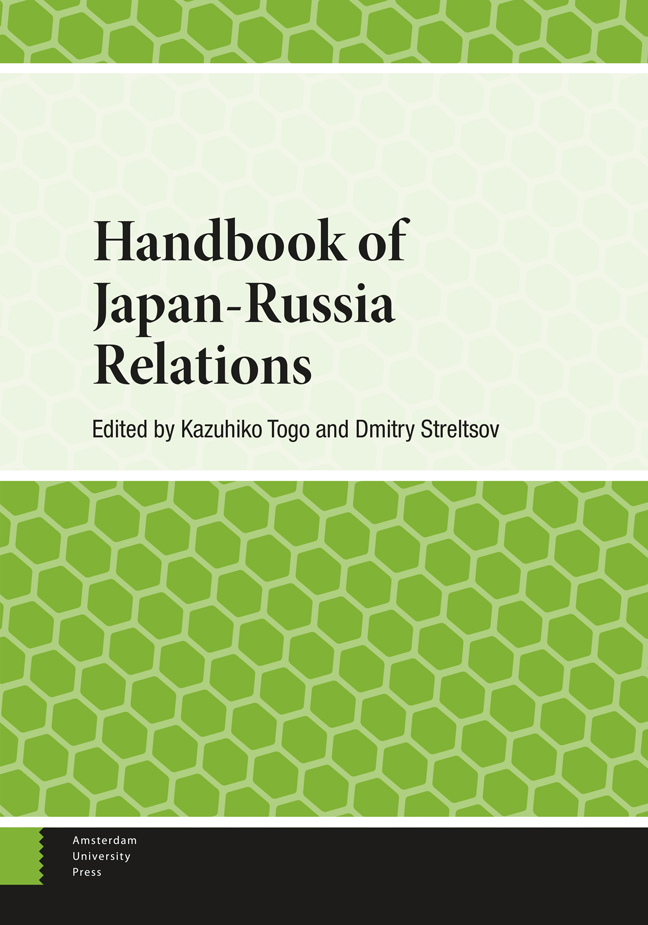Book contents
- Frontmatter
- Contents
- Dedication
- Acknowledgements
- Contributors
- Abbreviations
- Introduction
- Part 1 War and Peace: Diplomatic Relations and Security
- Part 2 Territory
- Part 3 The Economy and Energy
- Part 4 Disaster Cooperation
- Part 5 Culture
- Part 6 Perceptions of the Other
- Appendix 1 1956 Joint Declaration
- Appendix 2 Tokyo Declaration (1993)
- Appendix 3 Moscow Declaration (1998)
- Appendix 4 Irkutsk Statement (2001)
- Appendix 5 Foreign Ministry Statement (2022)
- Index
12 - The Possibility of Japan-Russia Joint Response to Disasters in Sakhalin and Its Surrounding Areas
Published online by Cambridge University Press: 26 March 2024
- Frontmatter
- Contents
- Dedication
- Acknowledgements
- Contributors
- Abbreviations
- Introduction
- Part 1 War and Peace: Diplomatic Relations and Security
- Part 2 Territory
- Part 3 The Economy and Energy
- Part 4 Disaster Cooperation
- Part 5 Culture
- Part 6 Perceptions of the Other
- Appendix 1 1956 Joint Declaration
- Appendix 2 Tokyo Declaration (1993)
- Appendix 3 Moscow Declaration (1998)
- Appendix 4 Irkutsk Statement (2001)
- Appendix 5 Foreign Ministry Statement (2022)
- Index
Summary
The Sakhalin region and its surrounding areas experience many natural disasters such as tsunami, storms, avalanches and landslides. The region is notable for the disadvantaged position they are in with regard to disaster response in terms of population, technology and equipment, and ease of access. Cooperation by Japanese post-disaster restoration experts in disaster response in the Sakhalin region will help deepen human and economic exchanges between the regions concerned and also expand opportunities to export disaster response equipment. Despite economic sanctions against Russia and diplomatic tension around the war in Ukraine disaster countermeasures around the region continue to be a potential field for further cooperation.
Introduction
The Sakhalin region and its surrounding areas experience many natural disasters such as tsunami, storms, avalanches and landslides, a fact not frequently reported in Japan. The region, particularly the islands around the main Sakhalin Island, are notable for the disadvantaged position they are in with regard to disaster response in terms of population, technology and equipment, and ease of access. Japan’s Northern Territories, which Russia considers to be part of the Sakhalin region, are similarly visited by frequent natural disasters and present difficulties for disaster response.
Japan has a rich experience in responding to myriad natural disasters and many areas in the country, including Hokkaido adjacent to the Sakhalin region, have knowhow in countermeasures against snow and storm damage, for rescue, and for restoration.
Cooperation by Japanese post-disaster restoration experts in disaster response in the Sakhalin region will help deepen human and economic exchanges between the regions concerned and also expand opportunities to export disaster response equipment. The aim of this chapter is to lay down the characteristics of the Sakhalin region and its surrounding areas as a disaster-prone zone and explore the possibility of joint disaster response activities that will contribute to economic exchange between Japan and Russia.
An overview of the Sakhalin region and external trade
First, we will take an overview of the Sakhalin region of Russia, Japan’s closest neighbor (the distance between Wakkanai and the southern end of the Sakhalin Island is about 40 km).
Tables 12.1–12.5 have been constructed by the author and show the main elements of an overview of the Sakhalin region posted on the regional government’s official site.
- Type
- Chapter
- Information
- Handbook of Japan-Russia Relations , pp. 220 - 234Publisher: Amsterdam University PressPrint publication year: 2024



